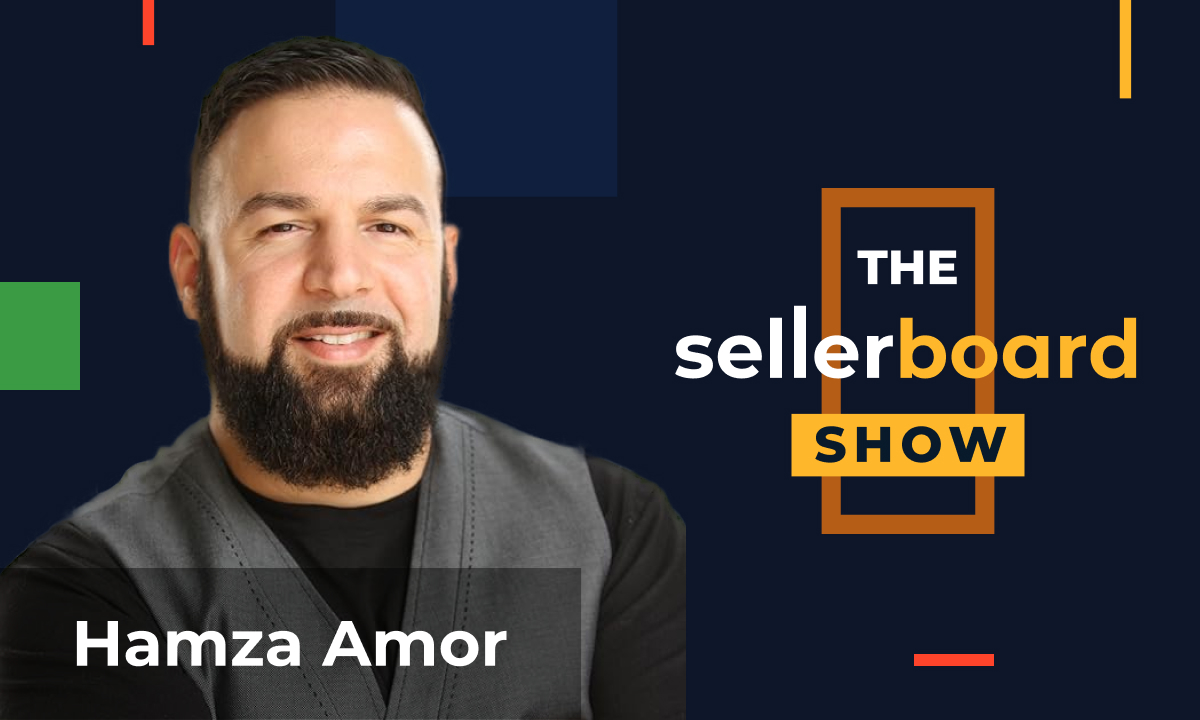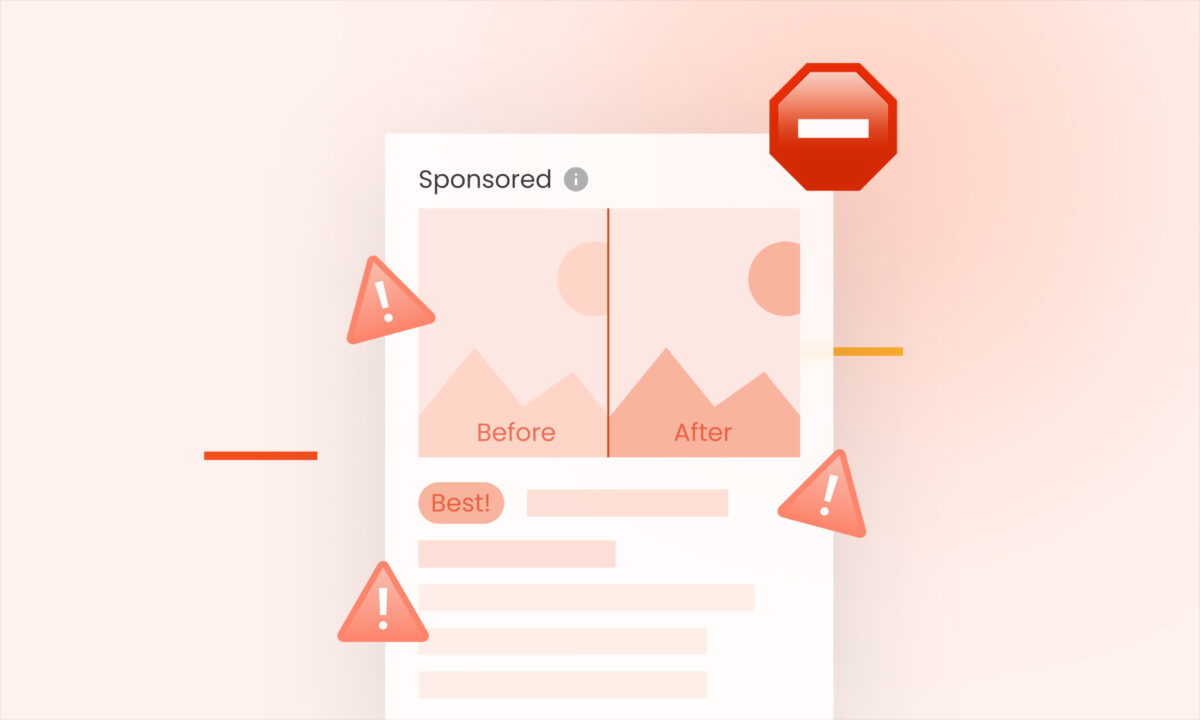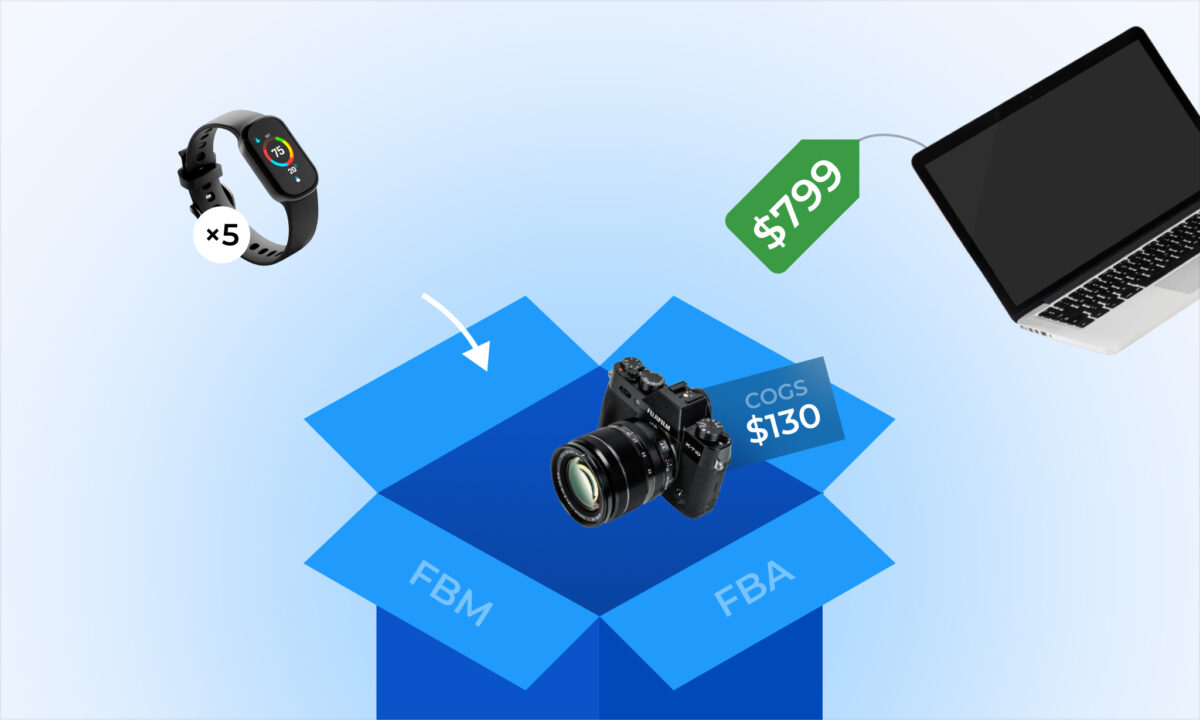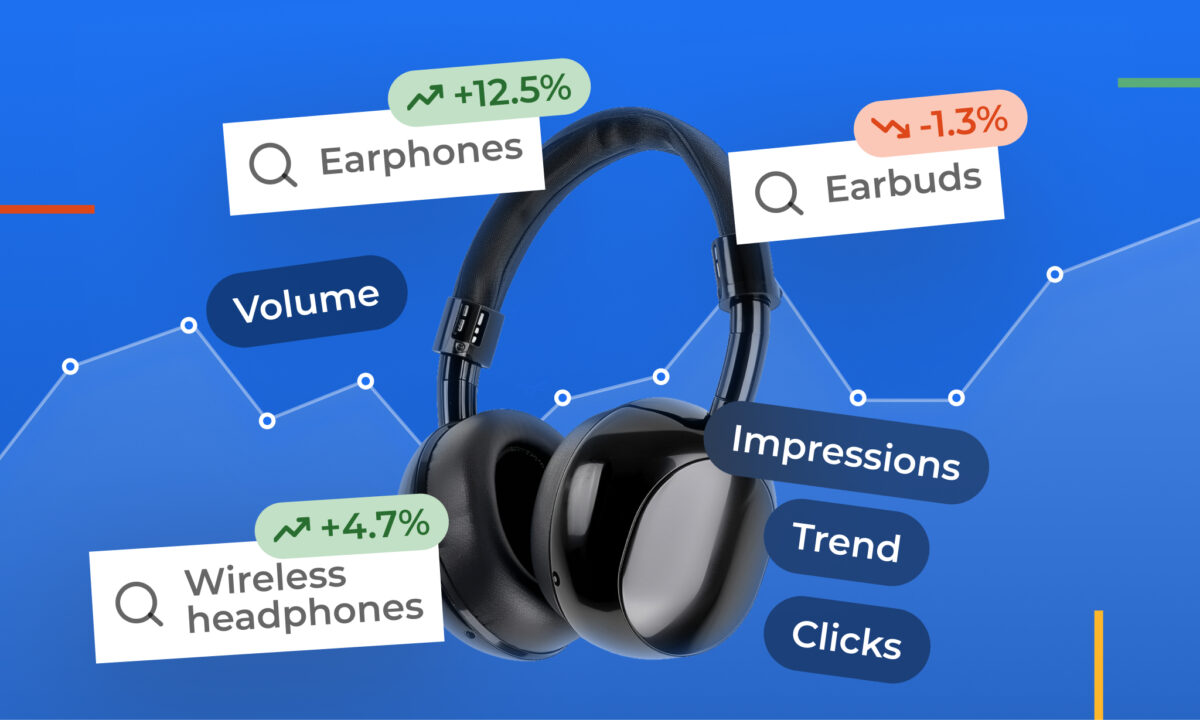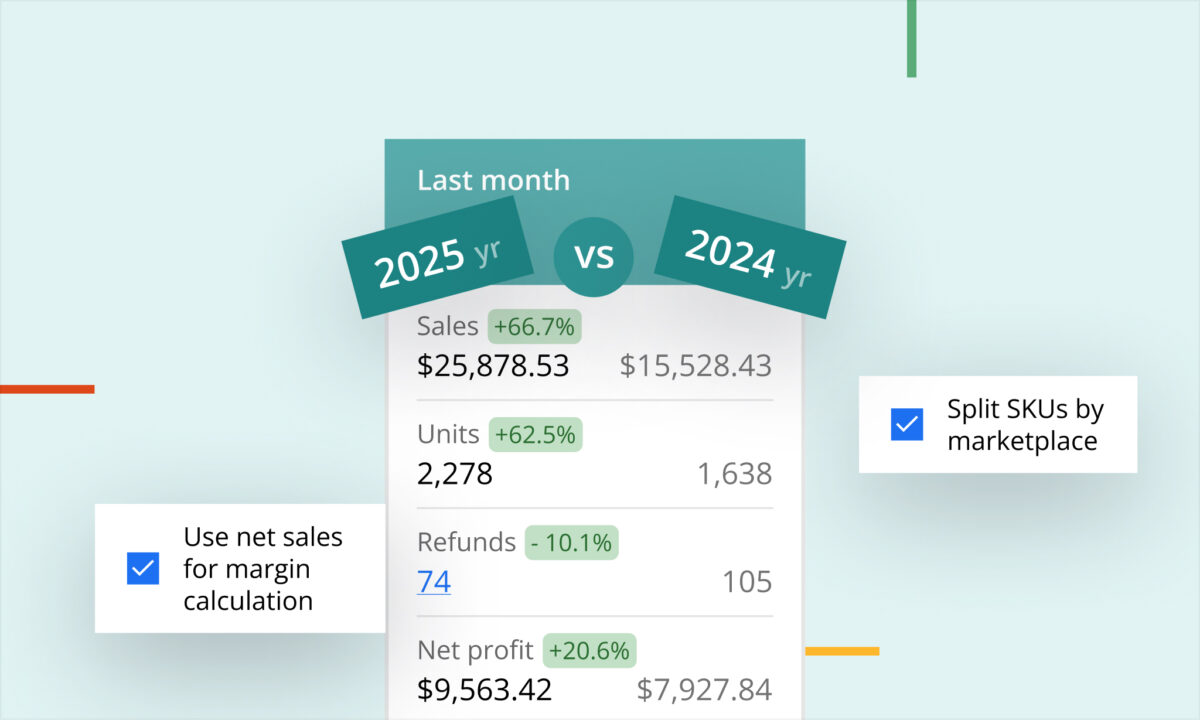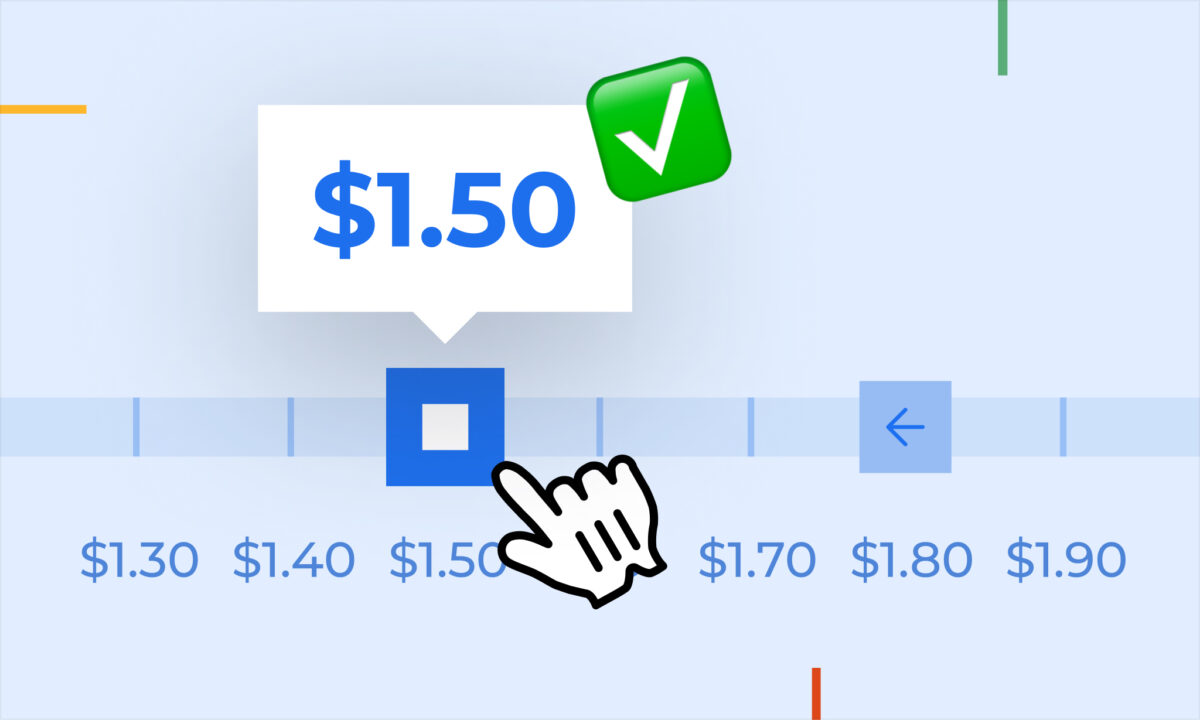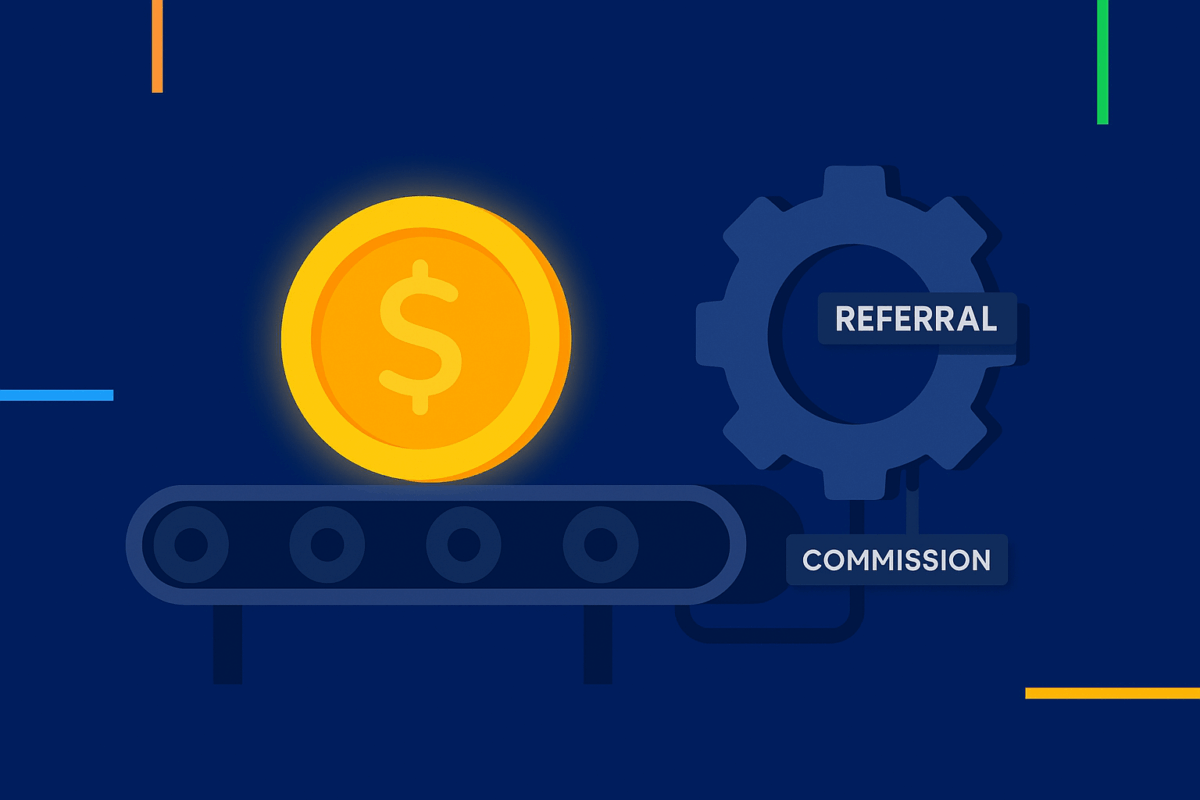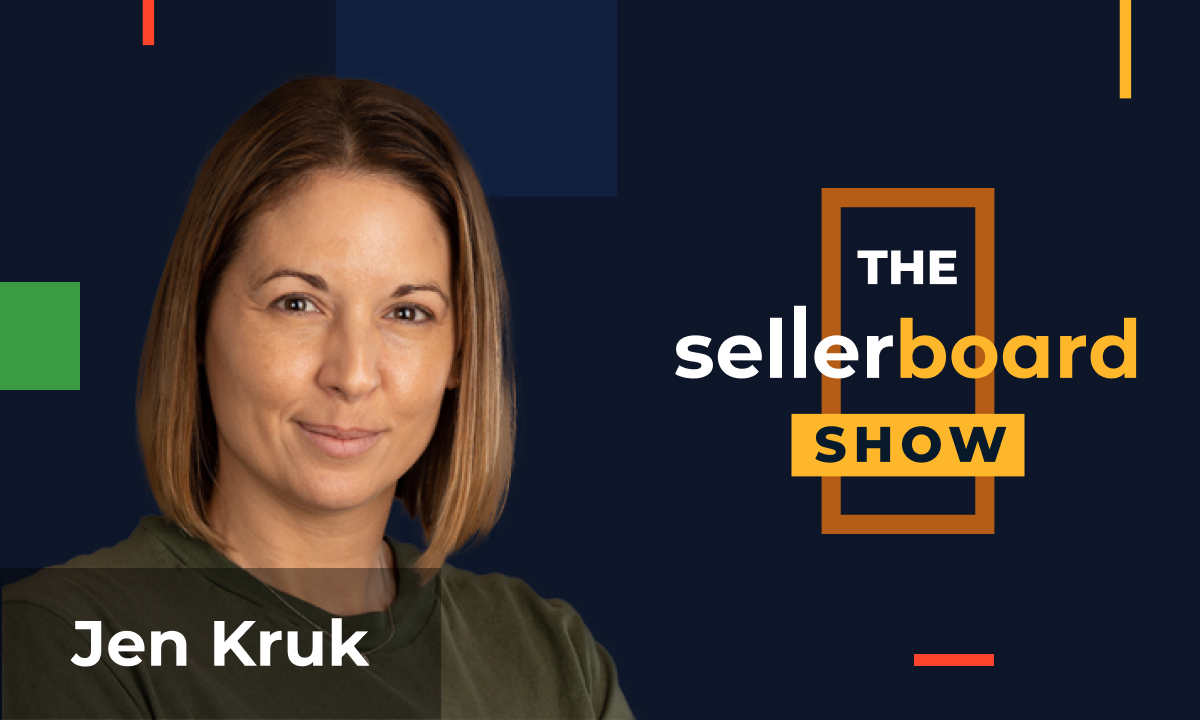Our guest on the sellerboard show was Hamza Amor – Chief Penguin Officer at Fussy Penguins, an Amazon selling services company that helps Amazon sellers, agencies and consultants scale their business through high-quality, timely, and affordable account management and advertising services.
Contents:
- why Amazon sellers need VAs;
- what could stop an Amazon seller from hiring a VA;
- 3 quick tips for beginners;
- the vision on the current trends in the Amazon selling space;
…and much more!
Speaker1: [00:00:07] Would you trust someone else with managing your Amazon business? They say you can only grow as much as you can delegate and automate the processes inside your business. Today’s special guest on the sellerboard Show podcast is Hamza Amor, who is the leader of the Fussy Penguins Virtual Assistant Agency, and he will tell us about how virtual assistant agencies work. And if you want to learn how an agency like this can help you free up more time to make business decisions that will lead to growing your business. Check out the episode and if you want to find a solution to automate the processes inside your business, check out the link in the description as sellerboard is not only an accurate profit analytics software, but it’s also a bundle of powerful automation tools like review request campaigns, inventory management, PPC bid and keyword automation, money back alerts and a lot of other features that will benefit your Amazon business. So without further ado, check out this exciting episode. My name is Alex. Let’s go. Hello everyone. Welcome to the sellerboard Show podcast. Today our guest is Hamza Amor. I feared that I wouldn’t spell that right, but I think I got it correct. Hello, Hamza. Thank you so much for coming to our podcast.
Speaker2: [00:01:43] Hello, Alex. Thank you for having me.
Speaker1: [00:01:46] Sure. So Hamza is the chief penguin officer at the Fussy Penguins Agency. And we are going to talk a little bit about the name a bit later. Fussy Penguins is an Amazon selling services company that helps Amazon sellers, agencies and consultants scale their business. So at least this is what the LinkedIn profile says. And we are going to learn more about Fussy penguins and virtual assistant agencies overall today because, for example, me personally, I’m not an Amazon seller, so everything related to how agencies work is something new for me. So today’s podcast is interesting for me in the first place, and I also hope for the people that will be joining us, it will be the same. So just to start, please introduce yourself. Tell us how you got into e-commerce. What was your journey, how you ended up creating Fussy penguins? But first of all, I would really love to know what was your first introduction to e-commerce? How did you start?
Speaker2: [00:03:02] Yeah, absolutely. Yeah. So I guess first things first is thank you for having me on the show. I really appreciate it. Um, so my background is a little bit unusual than most Amazon sellers. So I actually started my career as a, as a consultant in data and analytics. So data and analytics has been the focus of my career for the past 15 years or so. Um, and then I moved on to, to management where I was managing consultants. So, so my last position before starting, you know, the Penguins was being VP of consulting over 600 IT consultants in the US. Um, and the process that we had in the consulting firm was that we basically recruited people and we put them through a boot camp training and then we deployed them as consultants in the field with, you know, a full support staff that supports them while they’re on the field. So around that same time I started in Amazon 2019. Um. Yes, I remember. I started that with the amazing selling machine. So I struggled with the first couple of products, you know, although I made I made some revenue, I had some profits.
Speaker2: [00:04:19] But I started literally just as the pandemic was hitting. So, you know, even though, you know, the courses were good and the material is good, everything was kind of, you know, thrown in a whirlwind with with Covid. So I had to, you know, learn a lot of things very quickly. Sure. Yeah. So, yeah, So first product was okay. Second product was a little bit better. Third product was actually a big flop. Had a big, big issue with with the FDA, which, you know, was a big, big $30,000 lesson for me. Um, yeah. And then, you know, and then after that, that’s when things started to pick up. So after the third product, that’s when I started to, you know, understand, you know, what to do, what not to do. Um, yeah. And then eventually in 2022, that’s when I decided, you know, I wanted to start this business. So I started putting the pieces together of my experience knowing data and my experience, you know, building and, you know, scaling large teams into building this this business, which is called fussy penguins.
Speaker1: [00:05:24] All right. All right. Sounds good. And how how big is your team right now? How many penguins do you have?
Speaker2: [00:05:34] Yeah. So. So right now we are a team of nine people, so each person kind of super specializes in their field. So our service is, is a little bit different. So even though we do say it’s virtual assistants, but I think it’s closer to like a managed service. So the way that we operate is instead of, um, you know, instead of clients having to go and hire VA’s, you know, train them, you know, vet them, you know, try to retain them and so forth. Basically, they can work with us based on, you know, monthly subscription. And then they assign the tasks to to us and we delegate them internally to the right person. So let’s say a seller wants to create a new listing. They would go into our tool, you know, request that they want a new listing. And then internally the images will go to the graphic designer and then the copyright will go to, you know, the copyright expert with the SEO expert. Um, so in essence, we kind of alleviate the need for people to, you know, have to know who is this task going to go to, who’s going to do it. So they just assign it to us and we delegate it to the right person.
Speaker1: [00:06:46] All right. So what I read from your LinkedIn profile and overall from from the Penguins website. So is the fact that you, first of all, do account management and advertising services, are those two fields your main domain of specialization? So.
Speaker2: [00:07:09] Yes. Yes. So yes. So for Amazon, those are the two things that we focus on. So the account management is everything that has to do with managing catalog, you know, managing listings, managing seller support. And then the advertising side is where the PPC side of things comes in into play. So, you know, creating campaigns, optimizing campaigns, you know, for for sellers.
Speaker1: [00:07:34] Okay. Okay. Got it. So, but before getting into details about that, could you please tell me in general. Well, me, for example, let’s suppose I’m an Amazon seller. What I what are the reasons? Why would I actually delegate some of my tasks? Why would I need to to go to a VA or or search for an agency? What’s where the need comes from? So why?
Speaker2: [00:08:05] Yeah. So, so the thing is with, you know, Amazon so, so one I think a lot of people focus a lot more on, you know, learning new things and not so much on to execution. So I see a lot of people, you know, attend, you know, seminars, webinars, you know, attend conferences and, you know, as you attend these courses, conferences, all the all these all this material that you gather, you kind of create a list of to do things right. You want to try, you know, this new promo, you know, promo strategy or a new launch strategy. So a lot of times, you know, as a business owner, if you kind of focus too much into the step by step, you know, things of how to do things, it does tend to distract you from the bigger picture, which is, you know, the strategy you should be as a business owner, you should be delegating. Right? You should be delegating the hands on tasks. You should be focusing on the larger picture, which is, you know, how do you how do I expand the business? How do I get funding, How do I, you know, expand into new channels. So I think those are better endeavors for for a business owner rather than, you know, figuring out, you know, what’s the latest, you know, step by step to create, you know, a discount or a coupon or so forth. So.
Speaker1: [00:09:33] Yep, yep. Got it. So, yeah, I totally agree. And at Zillow board, we actually pitch an idea that is close. The fact that if you can, you probably should try as an Amazon seller to automate any processes or maybe in your case, delegate these processes the daily, uh, day by day routine that you have to do. So yeah, I totally get it. So just to leave time to focus on growth. Yeah. And how to do that to grow. Exactly. Um, and the Vas. So from our previous discussion, you’ve suggested some things to go through and from the list of questions I see an interesting topic for me right now. Um, the common misconceptions about hiring Vas. What are they? So for, for example, what could stop me an Amazon seller from deciding to hire a VA or for example, to to going to fussy penguins? Why? So what should I you know, what fears should I overcome? Or maybe. Help me out on this.
Speaker2: [00:10:43] Yeah, that’s the probably one of the biggest concerns that sellers have is, you know, how am I going to give access to somebody else into my account and they’re going to see all my secrets and all my revenue. And but the thing is, you know, as any company has to trust people, right? So you have to trust people because you can’t operate a business, you know, as one person. So whether you have a person here or a person overseas, there’s always a risk that somebody could do something. But what you can do is, you know, minimize that risk and build trust and build reports, you know, with your with your team and with your service providers. So for us, for example, you know, one of the things that we do is we do basically a background check that is equivalent to what the FBI would do here. So we do a full background check on all our resources. We check into their references. So we do a full and thorough check to make sure that they’re, you know, fully vetted, that they are who they are. And we get a clearance that to make sure that they don’t have any criminal record. So we verify everything down to the T because we want to make sure that our customers are comfortable working with us. And then the other thing is, you know, obviously you always want to make sure that you’re. Um, you know, you’re taking the necessary steps to protect yourself. So when you give somebody access to your account, you know, thankfully, Amazon has permission, so you can set certain permissions for them. What they can see, what they can do on your account. Um, so, yeah, so you just have to do your due diligence, but you have to be able to trust others. To to work on your account.
Speaker1: [00:12:29] Sure, sure. Totally agree with that. So trust is actually something that celebrate also was built on. And from my discussions with one of the co-founders, lady, he said that the first clients that our board had in 2017, they had to actually sign each NDA agreement personally and send it out to the users so they would be sure that nobody would have access to to their account. And even today, for example, this is a very hot topic for us because now we have a lot of customer feedback. So a lot of people are requesting to introduce integrations with third party software for seller board. And the main reason that we do not do this is because of data protection policy. So we just take this issue too seriously, you know, to, to, to do it. But yeah, I totally understand. And in your case, how do you handle the access management or the roles or whatever? So how do you delegate, you know, access to certain parts of the of the account and the management of the users?
Speaker2: [00:13:49] Yeah. Yeah. So, so even after doing all the the vetting, you know, and all the due diligence, we still only want people to see what they need to see, right? You never want to open, you know, all access to, you know, to anybody, even if they are, you know, an employee inside. And it’s just a precaution. So and you know, my background is in is in it and software development you know, within the analytics field. So I am all you know well too familiar with, you know, data privacy concerns and and this is a, you know, best practice for all you know it you know leaders and you know software development leaders is that you only want people to see what they need to see if they need something extra, then, you know, you may need to either time box it where, you know, they’ll have something extra just to get what they need done. But yeah, for the most part, you just have to have policies in place, you know, to have the right people have access to the right things.
Speaker1: [00:14:51] Yep. Got it. So are there any other, um. I don’t know, not drawbacks, but maybe fears that sellers need to overcome when they delegate. Because, for instance. Yeah, talking about trust, really, this is a big issue for me personally. For example, I don’t know what should stop a person from that would work potentially with my business model from just copying it and know and doing the same. So it’s kind of something that I really would have to overcome. But any other issues, anything that sellers, you know, fight with to before making this decision?
Speaker2: [00:15:32] Yeah. So the thing is, even even as as you’re working with providers like they don’t need to know everything about your business, right? So you want to keep certain things, you know, private to you, you know, as, as the seller, you know. But for us, you know, we do make sure that, you know, even as we do our due diligence with our staff, you know, at the same time, I wouldn’t give my my team access to everything in a customer account. So it’s always segregated, you know, where each person has access to, you know, the things that they need. Um, but, you know, for me as a, you know, what I would recommend to business owners is to kind of start small, um, you know, start delegating maybe, you know, smaller tasks that are not, you know, as, as, as private and not as as of concern. It could be, you know, starting maybe with just listing creation, I mean, just doing, you know, listing creation, listing images, the basics, you know, having somebody. Yeah, exactly. Exactly. I mean, even, you know, PPC, for example, you could have somebody manage PPC. They don’t necessarily know who your suppliers are. They don’t know what your, you know, Cogs cost of goods sold are. So, um, yeah, so, so the risk, you know, becomes apparent when you open the door to everything and especially with somebody that you don’t know and you haven’t worked with, you know, in the past and but yeah, but for us, as you know, as, you know, companies, you know, serving Amazon sellers, reputation is everything right If we have, you know, an issue as an agency or as a service provider, that means you’re not doing something right, you know, internally.
Speaker1: [00:17:11] Yep. Got it. So let’s talk a little bit about your clients. So do you work with all kinds of business models? Do you work with private label owners or wholesalers or wholesale or arbitrage? So do do you offer services to all of them or you specialize on a certain business model?
Speaker2: [00:17:33] Yeah. So we only specialize on private label sellers.
Speaker1: [00:17:38] Okay. Okay. Got it.
Speaker3: [00:17:40] Yeah.
Speaker1: [00:17:41] And I would love to know more about, you know, what kind of businesses are these small businesses or maybe, I don’t know what’s, what’s the, you know, the, the range of, of how much business actually in volume do you manage?
Speaker2: [00:18:00] Yeah, Yeah. So we, we have clients that are actually just starting out. So we’ve had clients come to us that said, you know, help us, you know, start the store all the way to, you know, seven figure sellers. So we have, you know, seven figure sellers that that do pretty well. And, you know, we’ve actually. A lot of our larger sellers, you know, we introduced them to to seller board. So that’s, you know, that’s been that’s been working out really well.
Speaker1: [00:18:29] Nice. Nice. Now that you brought this up. I wonder, how do you how do you do the profit analytics part and what what role does Silbert play in it? I mean, what business decisions do you base on the data that you get from seller board or how do you report? I mean, how do you use seller board in your day to day work and with your interaction with the clients? Could you relate to that?
Speaker2: [00:19:00] So. Yeah. So for every client that we have, I always ask, you know, what kind of tools that they have, What are they using for reporting? Because as a business owner and as you know, an Amazon seller, you need you need two things, right? You need good data so you can make good decisions. And two, you need execution, right? So we take care of the execution part, but they need to work on the data aspect because, you know, when we initially started, we started to sign, you know, with customers, you know, they will basically ask us, you know, we love the service, but we don’t know what to prioritize. We don’t know what to do first. So our answer to that was seller board, right? So we we connect seller board to their store. We load their cost of goods sold so that we can have a good clear view on profitability. We connect to PPC so that we can have, you know, full view on the total tacos, basically total advertising cost of sales. So that gives us a full view into not only how are we doing in terms of profitability, but how are we doing in terms of growth. And that allows, you know, that allows sellers to essentially be able to prioritize because now you have full visibility over your stores. You can see what are your you know, what your top performing products are, what are the, you know, bottom performing products, maybe some things that you need to cut and remove from your store, maybe products that are doing well. You need to expand and add more variations. So the discussion becomes a lot easier. Uh, into what needs to be done. And we’re not just guessing, you know? Well, maybe. Maybe if we do this, it’s going to be good. Maybe if we do that, it’s all data driven and it’s all, you know, leveraging seller board.
Speaker1: [00:20:59] Nice. I wonder, do you use the roles management module just, you know, to kind of distribute the the roles between and the access to to celebrate and to the BBC? Because the things that we taught talked about a bit earlier. Now in the discussion, I mean, we have this functionality, you know, just to give certain access to certain parts of Singapore to different team members. Do you do that?
Speaker2: [00:21:24] Yeah, so. So actually, for Sellaband, the only people that have access to the seller board is the client and then the account manager from our side. So it’s really, it’s used for decision making. So doing, when you’re doing analysis and then making decisions on what to do next, and then the client and the account manager on our side, they decide, you know, what are the next tasks that we need to work on? And they get entered into the system. So that could be, you know, PPC management, creating new listings, adding A-plus content and, you know, and so forth. Just based on those the decisions made from from seller board.
Speaker1: [00:22:04] Okay. Okay. One last question since we’re still on the topic. Do you use the inventory module and the inventory planner at the purchase orders module?
Speaker2: [00:22:17] We do. We do. Our clients love that because it gives them, you know, full visibility into, you know, what your inventory levels are now. Um, you know, if there’s anything on the way in transit to to Amazon FBA you can see it in the dashboard and then they they like getting the alerts when inventory levels are down. I can’t tell you how, how awesome that module is. I think it’s probably underlooked in, in seller board, but it’s helped us, um, you know, it’s helped us save a lot of headache for our customers.
Speaker1: [00:22:49] You can’t even imagine how happy you make me right now because I’m the person who does the training. So every time I attend a webinar or a training and I talk to people and I really understand that they are seller board users, but, you know, from all of the variety of tools, they only use a certain percentage and that’s like 10 to 15% just to see their numbers and do all the all the work that’s necessary to make some decisions. But they do not fully leverage the potential of the automation tools, you know, like, for example, the inventory management tool. So every time I come across an experienced user, that always makes me feel better. Thank you.
Speaker2: [00:23:32] Yeah. Yeah, absolutely. Absolutely.
Speaker3: [00:23:34] My pleasure.
Speaker1: [00:23:36] Great. Okay, so, um, could you please tell me more about maybe one of the cases when you. Now that you’ve made me happy. Tell me about a case when you made one of your clients happy. Uh, when you manage, you know, to to get their results up. And what was the role of penguins in this and how you managed to do it? Just one of your, you know, uh, stories that you are proud to share. I would love to hear that.
Speaker3: [00:24:09] Sure, sure.
Speaker2: [00:24:10] Yeah. So I do have one that comes to mind. Um, one of our customers came to us after, you know, having worked with, with an agency for basically a year. And their, their they had basically their sales and their profits just stagnated, which is, you know, quite amazing to me because you would think that you would have spikes in, you know, Q4 when sales go up or prime day. But it just kind of stayed flat throughout the 12 months. And even profitability was, you know, pretty much a 2 to 3% decline or incline, which which is, you know, kind of surprising. Um. But one of the first things that we did for them is we plugged them into solid board. They didn’t have any visibility over profitability. They had no idea, you know, they had, you know, an idea of what their, you know, profit margin or gross profit margin from, you know, from their accountant, but not down to the to the Asian level. So that that was really critical to put that in place. And then the next thing is we we also plugged them into PPC and into inventory. So we started leveraging all those features to understand, you know, what are some of the things that we need to do more of that are working? And then what are some of the things that we need to get rid of and remove? Um, so, and for us it was all, you know, to kind of giving the clients the tools that they need. Um, you know, for them to, to be able to make those decisions and they’ll have those discussions with the account manager. So it’s not basically us telling the client, Here’s what you need to do, but it’s kind of us meeting with the clients and saying, okay. Now that you have the data, here’s you can see everything. You can see your profitability. You can see how things are trending down. So we take them into the the seller board dashboard that has the the little sparkline that that trends. The 12 month trend.
Speaker3: [00:26:13] The trend. Right.
Speaker2: [00:26:15] And then you can see. Yeah. So you cut off there for a second?
Speaker1: [00:26:22] Sorry. Sorry about that. So I thought that you were talking about the trends view for for each Asian. Right?
Speaker2: [00:26:31] Yes, Yes, that’s the one. And then that trends view tells you how things are, you know, performing over time. And are you able to make decisions whether, you know, this is something that we need to intervene and make some changes, Maybe listing needs to be optimized. Maybe. The BBC needs to be optimized. The first month of them working with us to make those adjustments, we had a 12% increase in profit. So revenue stayed the same. We didn’t add anything, anything new because, you know, to me the important thing in the beginning is to make sure to not just throw money at growing sales, but, you know, optimize profitability first, then adding more money to, to grow. So, um, and then by month two, we were at 25% profit increase from one day came. So, so now we’re, we’re working with them. This is month three. But that was, that was huge. Huge for them. I can’t tell you. You know, I mean they make, you know, pretty, pretty big numbers. And the 25% was a significant increase in their profit. So.
Speaker1: [00:27:43] Amazing. Amazing. That sounds really impressive. So one one question came to my mind right now. I imagine that you have all kinds of clients. I mean, each one with its own, you know, type of product. And how do you identify the unique needs of every client? I mean, because it’s every business is different. I mean, every, every, every product is different. And, you know, the customer consumer behavior is different. So how do you identify what’s the process that fossil penguins.
Speaker2: [00:28:17] Yeah. So, so we do have an onboarding time period where we, we need to learn about the business. We need to understand, you know, if the business has a certain seasonality, we need to understand if they have any kind of restrictions. You know, because every, you know, every niche, you know, sometimes you think you know what the niche is about. But once you get into it, the nuances are very different. You know, they’re pretty big. Um, but for us, you know, after we, after we gather that Intel from the client to understand the business and how they operate, um, we kind of let the data do the talking. So, you know, the data, you know, once you plug into, you know, seller board or, you know, reporting tool, you’re able to see, you know, historical data, you’re able to identify seasonality. Um, and then from there you can kind of identify where are the gaps and where we need to be, you know, from there. So we also do, you know, take a look at some reports, you know, within Amazon, uh, you know, such as, you know, growth Opportunity Explorer, there are quite a few different different tools, you know, for brands to see if their conversion rate is good to see, you know, for example, for specific keywords, what is the ideal conversion rate. So that allows us to kind of, you know, see where they are compared to their niche and then where they are historically speaking. So so we always want to be, you know, you know, benchmarking against those to how are we doing compared to the nation, how are we doing compared to historical data.
Speaker1: [00:29:55] Got it. So imagine a situation that I’m your new client and I have a business that I brought to you and I say, okay, Hamza, I’m having trouble with my sales. What would be the first thing that you would look at to identify the root of the problem? If there’s if it’s a thing, it’s a process that you do all the time. The first. The first.
Speaker3: [00:30:19] Thing. Yeah. So.
Speaker2: [00:30:20] So we need. Yeah. So that’s the thing. Like there may not be a problem, right? It could be that just the, you know, the products or the product line is stagnating. Right? So, so the first thing that I would look at is. We’re looking at benchmarking. First, I want to see, you know, how the niche, how am I doing compared to the niche and then how the top keywords, you know, what are the conversion rates for, for the top keywords for the product. If I see that I’m below, you know, those percentages for the conversion rates, then you know, I know that there’s something, something wrong. Um, and you know, you have to think about the, the customer journey as a, as a funnel, right, for, for Amazon. So there’s always, you know, um, you know, being found in Amazon. So impressions basically is the number one you want to be able to, to, to know that you have enough impression that enough people are seeing your product.
Speaker3: [00:31:20] Uh.
Speaker2: [00:31:21] The second thing is knowing conversion rates. So the conversion rates, you know, we can, you know, that’s basically the next step after, you know, the impressions once, once people can see you, are they now, you know, you know, clicking to clicking on your listing and then are they when they click on your listing, are they converting? So those are, you know, basically the three steps that I look at. So, so yeah, so impressions and click through rates and then conversion rates. So the click through is when they see your listing, they click on it and then from there, you know, make a conversion. So you want to optimize each level of those of those three three steps to make sure that the, you know, the each listing is performing to its maximum.
Speaker1: [00:32:09] Okay. Okay. Got it. Thanks. So. All right, now, um. Before before I would get into the interesting part about your visions, about the future. I’m leaving that for the end. My question is actually a request. If you could give our viewers three quick tips for analyzing their situation right now and and the things that they individually and by themselves could look at and some some ways that they can act upon the things that they would analyze. So see this, do this if there’s there’s such a way of working.
Speaker2: [00:32:56] Yes. Yes. Um, yeah, that’s definitely a big, big question because there are obviously a lot of things that could be wrong with, you know, with a listing or with an overall store. Um. But for me, I would say, you know, for for people that are just getting started with Amazon, I would say, you know, as you’re as you’re doing product research and you’re looking to to start make sure that you’re looking for products that are trending up over time, that where the demand is growing. So I think a lot of people miss that. You know, even even existing sellers when they’re adding new products to their portfolio, I would say don’t just add things that are selling a lot, but add things that are trending up in, you know, month to month. They’re going up. Um, so that’s, that’s a tip, I guess, for both new new sellers and existing sellers. Um, number two, I would say, you know, when analyzing conversion rates, which is something that we touched on earlier, this this is a big one. A lot of people don’t know about the Growth Opportunity Explorer, where you can put a keyword and you can actually get all the way down to what each keyword, what the conversion rate should be for each keyword. And it will tell you the historical, you know, the historical data. So you can basically compare your search term report, you know, to the conversion rates in this growth opportunity Explorer to see, you know, whether you’re doing good or doing bad.
Speaker2: [00:34:33] And then from there, you can kind of see if you’re doing if you’re below the conversion rate for that keyword, then you should basically test some things. So I guess that brings me to the the third point. So leveraging a B testing is also an underrated value, um, or an underrated tool in Amazon that a lot of sellers don’t use. Um, so because we are data driven, you know, we make all our decisions based on facts. Um, that’s why, you know, I tell, you know, sellers to, you know, make sure that you get an analytics tool that’s going to give you visibility over your data and your performance. But a, B testing allows you to take the guessing out of the equation so you can test, you know, for example, two titles simultaneously or test, you know, bullet points or test images or test A+ content. So you can see two listings with everything the same except for one thing that’s different and see how they perform against each other. Um. So yeah. So I would say that that would be that’s a big one for, for Amazon sellers. I think knowing how to use a B testing, being patient, waiting for for the data to come back, you know, typically a couple of weeks or so so that you have enough data to make an informed decision. So.
Speaker3: [00:36:01] Yeah. Yeah.
Speaker1: [00:36:02] That. That sounds legit. Thank you. In the time left that we have, I would like to ask you a few more questions. The first one would be, given the fact that you work with a lot of different clients, you probably see some trends and maybe you even foresee some trends in the near future. I would like to know how are you preparing for those trends and what do you see? I mean, what’s your vision on how the Amazon selling space is going to evolve in the near future?
Speaker2: [00:36:38] Yeah, that’s. That’s a very good question. Um, I can definitely see some, some, some trends happening right now. I think the first one and the most immediate trend is that Amazon is becoming more of a pay to play, uh, platform where. You know, most of your sales are going to start or more and more of your sales are going to start to come from sponsored, you know, sponsored ads or sponsored rank. Um, because we’re noticing that the, you know, before, you know, Amazon did not have, you know, a ton of spots, you know, in the in the search and the search results. It didn’t have a lot of spots that were dedicated to sponsored listings. But now we’re starting to see, you know, a lot, you know, more and more sponsored ads, you know, taking more of that space where there’s barely any space for for organic, you know, results, where now you have, you know, sponsored brands and then sponsored product listings in the top in the middle or in the bottom. Um, so it’s becoming more and more necessary for sellers to really understand PPC and advertising retargeting. You know, all these things are becoming essential. Like there’s no longer you can no longer get by by just, you know, having a good product and expecting it to do well. Like you really have to master and understand PPC and advertising. And if you don’t master it, you know, find a partner that can help you do it. So so that’s one I think that’s that’s a big trend right now. All right. Um, I would say, you know, just how things are evolving with AI and artificial intelligence, I think that’s definitely going to take over the search.
Speaker2: [00:38:31] Um, probably within, you know, a few, um, a few months. I would say that we’re going to see, you know, some sort of module module that’s added to Amazon search where you search for something. It’s going to suggest some things that, you know, we may not be thinking of right now, um, which may be an opportunity for sellers to kind of, you know, maybe there may be an opportunity for first movers, you know, into into that to capitalize on it. So, um, I’m sure Amazon will make, you know, sellers pay for any additional, you know, exposure. But I think it’s something that, you know, top sellers are definitely keeping a lookout on. You know what’s Amazon going to do with specific in the search results? Um, and then I would say, yeah, yeah, that’s the second one. And then number three is probably, is also related to I, I think, I think we’re going to see, um, a lot of movement in the, in the software providers side of things where I think they’re going to start to buy each other, um, because they’re going to be complementing each other. Um, I can see where, you know, big platforms, you know, that may have a certain, you know, component, um, you know, 1 or 2 where they might, you know, add, you know, smaller software providers, you know, just so they can expand their offering. Um, so I think we’re going to see a big, um, uh, a big shift in the marketplace in terms of tools and a lot of aggregations of products just so that they can offer a consolidated AI offering. So those would be my, my top three, uh, you know, predictions in the space.
Speaker1: [00:40:30] Nice. That’s, that’s, that’s really a picture right there. Yeah.
Speaker3: [00:40:36] Yeah, yeah.
Speaker2: [00:40:37] It’s definitely a big part of it. So.
Speaker1: [00:40:40] Yeah, yeah, I totally agree with the, I just, you know, penetrating every aspect of our lives and the Amazon space, it’s such a large, you know, has so much uncovered ground and potential for the AI. So yeah, there’s I totally agree there’s going to be a lot of work in that direction. I agree. All right. All right. Um, Hamza, I think I have one last question for you. Just a quick one. Um, what is your favorite thing that you enjoy in your work?
Speaker2: [00:41:19] My my favorite thing that I enjoy in my work. Yes. Um. I would say when I when we hear good feedback about the work that we’ve done, that’s, you know, that makes our day. And I, you know, usually share that with the entire team. But, you know, last week we were at at a conference at Silicon in Austin, Texas, and then, you know, had a, you know, a couple of people come to us and say that they’ve heard good things about us and that just, you know, just made my day to hear that, you know, people are hearing about us and they’re hearing good things. So so which means our clients are saying good things about us. So we take we take those wins, you know, seriously. We share them internally with the team to make sure everybody is aware. But I would say that’s probably the, you know, the satisfying part to see that, you know, our hard work and efforts, you know, pay off and you know that customers appreciate the hard work that we put in.
Speaker1: [00:42:18] Amazing. Amazing. That’s nice to hear. All right. These are all the questions from my side. Thank you so much for coming to us to our podcast, for sharing your experience. And one last thing for the sellers that would like to, you know, to contact you to see if fussy penguins can increase their results, which I’m pretty sure you can. How what should there be there steps? How can they reach you?
Speaker2: [00:42:52] Yeah. So they can reach out to me by email at the contact@penguins.com. Or they can look me up on LinkedIn as well. I am there as Hamza Amor. Yeah. And you know obviously our website is fussy penguins.com as well works there’s contact information there but yeah Alex thank you so much for having me. I really appreciate it. I enjoyed our discussion today.
Speaker1: [00:43:17] Sure. Same thing. Thank you. Comes out once again so much. I hope to see you somewhere. Maybe at a conference or somewhere. Have a great.
Speaker3: [00:43:26] Day. Yes.
Speaker2: [00:43:26] Likewise. Thank you. You too.
Speaker1: [00:43:28] Good luck. Bye bye. This is it for today. Thanks again to Hamza for taking the time. I really hope you enjoyed today’s episode and learn something new about how virtual assistant agencies work. I definitely learned a lot and if you haven’t yet checked out sellerboard, see the link in the description. See the demo account. Learn how the automation tools can help you free up more time to grow your business. Make those decisions and analyze your situation with sellerboard. So thanks again for your interest. See you in the next episode of the sellerboard Show Podcast. Bye.
